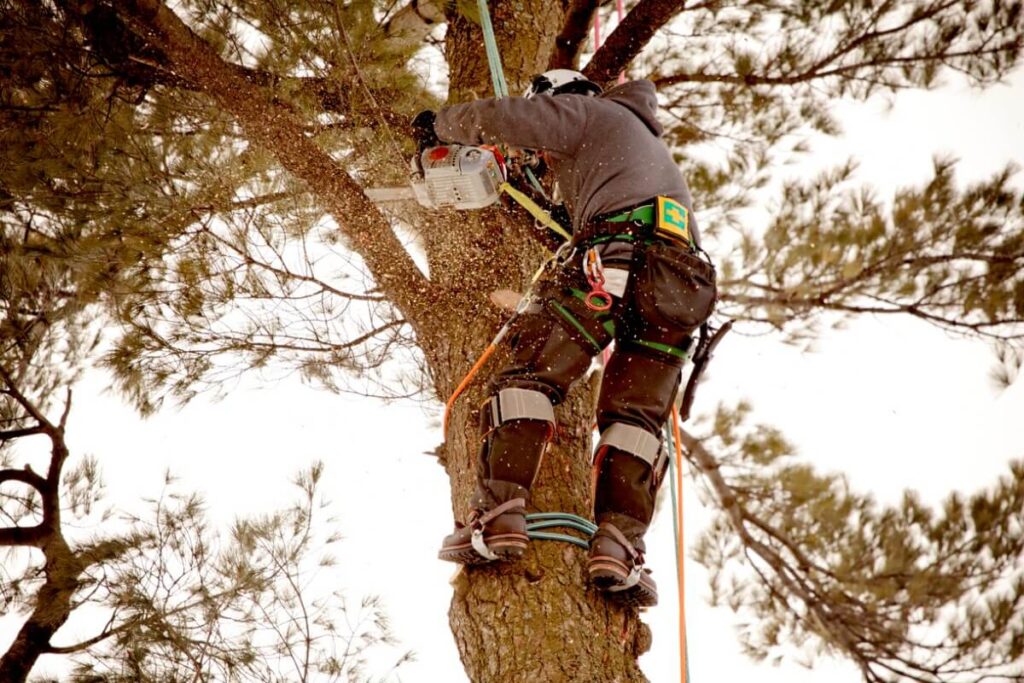How to Save on Tree Pruning Costs
Seasonal Discounts and Offers
Many tree pruning companies in Sydney offer seasonal discounts, particularly during the off-peak months when business may be slower. It can be worthwhile to inquire about any ongoing promotions or offers that could help you save on costs. Keeping an eye on local advertisements and online coupons may uncover significant savings.
Additionally, some companies offer bundled services. For instance, if you require other landscaping services, you may receive a better deal by combining them with tree pruning. This can include services such as hedge trimming, lawn care, and pest control, which not only enhances the overall aesthetic of your property but also ensures that all aspects of your landscaping are well-maintained. By taking advantage of these bundled services, you can streamline your landscaping needs and potentially save a considerable amount of money.
Regular Maintenance to Reduce Costs
One effective way to save on tree pruning cost is to maintain a regular pruning schedule. By doing this, you can avoid larger, more costly jobs in the future. Regular maintenance promotes healthy tree growth, reduces the risk of disease, and helps to keep tree size manageable. Trees that are pruned regularly are less likely to develop structural issues, which can lead to expensive repairs or even tree removal down the line.
Investing in scheduled pruning not only enhances the health and appearance of your trees but also ensures that trees remain in a safe condition throughout their lifespan, thereby saving you money in the long run. Furthermore, regular pruning can improve the overall safety of your property by reducing the risk of falling branches during storms or high winds. This proactive approach not only protects your home and loved ones but can also potentially lower your insurance premiums by demonstrating that you are taking steps to mitigate risks associated with tree hazards. Learn more about how to choose the right arborist for tree pruning.
Understanding Tree Pruning
The Importance of Tree Pruning
Tree pruning is an essential practice for maintaining the health and appearance of your trees. It involves the selective removal of specific parts of a tree, including branches, buds, and roots. Proper pruning enhances tree structure, prevents disease, and encourages fruit and flower production. By promoting healthy growth, you not only improve the aesthetics of your landscape but also increase the longevity of your trees.
In urban areas like Sydney, tree pruning helps to reduce the risk of hazards posed by overgrown branches. An unpruned tree can become a liability, particularly during storms or high winds. By trimming back overhanging branches, you minimize potential damage to property and ensure safety for pedestrians and vehicles. Moreover, regular pruning can improve air circulation and sunlight penetration, which are crucial for the overall health of the tree and surrounding plants. This practice not only contributes to the vitality of the trees themselves but also enhances the beauty of the entire neighborhood, creating a more inviting and serene environment for residents and visitors alike.
Different Types of Tree Pruning
There are several techniques used in tree pruning, each tailored to achieve specific goals. Understanding these methods can help property owners make informed decisions about their trees’ care. Common types of pruning include:
- Thinning: This technique involves removing select branches throughout the tree to reduce density and improve light penetration.
- Heading: Also known as topping, this method cuts back the shoots on a branch to promote new growth.
- Reduction: Reducing involves cutting the tree back to specific branches, thereby maintaining its shape without compromising its health.
- Deadwooding: This involves removing dead or dying branches to enhance the overall health of the tree.
In addition to these techniques, it’s important to consider the timing of pruning. Different species of trees have specific growth cycles, and pruning at the right time can significantly influence their recovery and growth patterns. For example, many flowering trees should be pruned right after they bloom to avoid cutting off next season’s buds. Conversely, trees that bloom in the summer should be pruned in late winter or early spring. Understanding these nuances not only aids in the health of the tree but also maximizes the visual impact of its blooms and foliage throughout the seasons. Furthermore, employing the right tools and techniques is crucial; using clean, sharp tools minimizes damage to the tree and helps prevent the spread of disease, ensuring that your tree remains robust and thriving for years to come.

Factors Influencing the Cost of Tree Pruning
Size and Number of Trees
The size of the trees and the number you wish to prune are significant factors affecting the total cost of tree pruning. Large trees require more labor, specialized equipment, and time, which in turn increases the overall price. Additionally, if you have multiple trees that need attention, bulk pricing might be available, but the total expense will still be considerable.
For instance, pruning a single young sapling may only take a short amount of time and effort, whereas a mature tree can take several hours or even a full day to prune properly due to its size and complexity. Furthermore, the type of pruning required—whether it’s crown thinning, crown reduction, or deadwood removal—can also influence the duration and cost. Each technique demands different levels of skill and equipment, which can further complicate the pricing structure.
Tree Species and Condition
Different tree species have varying growth habits and structural characteristics, which influence the methods used for pruning. Some species may require more careful techniques due to their specific growth patterns or susceptibility to disease. Furthermore, assessing the condition of the tree is essential; trees that are diseased or have been previously neglected may require specialized care, resulting in higher costs.
For example, pruning an unhealthy tree often takes longer, and it may be necessary to consult an arborist for an evaluation, adding to the expense. Additionally, certain species, like oak or maple, have specific pruning windows to avoid sap loss or disease transmission, which can further complicate scheduling and increase costs if the work must be done at a particular time of year.
Accessibility and Location
The accessibility of the tree is another significant determinant of cost. Trees located in difficult-to-reach areas, such as those near power lines or steep slopes, require additional safety precautions and equipment. This specialized work can escalate the cost considerably compared to pruning trees in easy-to-access locations, such as backyards or public parks.
Moreover, the proximity of the property to urban centers in Sydney can affect accessibility. Urban trees may require permits for pruning, especially if they are on public land or involve some form of road closure during work. In densely populated areas, the logistics of managing traffic and ensuring public safety can add layers of complexity and cost to the project. Furthermore, the presence of neighboring properties can necessitate additional precautions, such as protective barriers or specialized equipment, to prevent damage or liability issues during the pruning process. You can visit https://issuu.com/hooverhorticulture/docs/the_cost_of_tree_trimming_and_the_factors_that_inf to get more on the cost of tree trimming and the factors that influence it.

Average Cost of Tree Pruning in Sydney
Hourly Rates for Tree Pruning
In Sydney, the cost of tree pruning typically varies depending on various factors previously mentioned. On average, you can expect to pay between AUD 50 to AUD 150 per hour for professional tree pruning services. However, this can fluctuate based on the complexity of the job, the skill level of the arborist, and the time of year.
It’s important to note that some companies may have a minimum charge for tree pruning, regardless of the time spent on the job. This ensures that the service provider’s basic overhead and travel costs are covered. Additionally, the season can play a significant role in pricing; for instance, during the spring and summer months, when tree growth is at its peak, demand for pruning services often increases, leading to higher rates. Conversely, winter months may see a decrease in prices as fewer homeowners seek pruning services during the colder weather.
Fixed Price vs. Hourly Rate: Which is Better?
When it comes to deciding between fixed pricing and hourly rates, each option has its advantages. Fixed pricing offers certainty, allowing you to know exactly how much you will pay before the work begins. This can be beneficial if you have a clear understanding of what needs to be done. Furthermore, fixed pricing can also include additional services like debris removal or stump grinding, which can provide added value and convenience for homeowners.
On the other hand, hourly rates may be more cost-effective for simple pruning jobs or when working with smaller trees, as you only pay for the time spent. However, if the job turns out to be more complex, the costs can quickly escalate. It’s also worth considering the experience and qualifications of the arborist; a more skilled professional may work faster and more efficiently, potentially saving you money in the long run. Therefore, when choosing between these pricing structures, it’s crucial to assess the specific needs of your trees and the expertise of the service provider to ensure you make the most informed decision.
Hiring a Professional Tree Pruner: Pros and Cons
Safety and Efficiency Considerations
When considering tree pruning, hiring a professional arborist comes with its own set of pros and cons. On the safety side, professionals are trained to handle heavy equipment and work at heights, minimizing risks that a typical homeowner may face. They understand the specific needs of trees and how to prune them safely without causing damage. This expertise translates to efficient work, ensuring that your trees are pruned correctly and promptly.
However, the downside often includes the cost of hiring professionals. Many homeowners may find professional fees to be prohibitive. In such cases, understanding your skill level and the risks involved is crucial before deciding to opt for DIY pruning. Additionally, it’s important to consider the time commitment involved in learning proper pruning techniques and the potential for costly mistakes that could arise from inexperience.
Assessing the Quality of Service
To ensure you receive quality service when hiring a professional tree pruner, it’s essential to do your research. Look for licensed arborists with positive reviews and experience in tree care. Asking for references or checking affiliations with recognized horticultural organizations can also provide peace of mind regarding the quality of service. Furthermore, it’s beneficial to inquire about the specific techniques they use, as some methods can be more beneficial for the health of your trees than others.
Additionally, don’t hesitate to ask for a detailed estimate that outlines the scope of work and any potential additional costs. This transparency can help you avoid unexpected expenses and ensure that you are getting the best value for your investment. Engaging in a conversation about your trees’ specific needs can also lead to tailored advice that may enhance their health and longevity. By fostering a good relationship with your arborist, you may also gain insights into ongoing tree care practices that can save you money in the long run.
In conclusion, while the cost of tree pruning in Sydney can vary greatly based on several factors, understanding the importance of the practice, making informed choices, and utilizing available resources can help you navigate the complexities of tree care. By keeping these guidelines in mind, you can ensure your trees remain healthy and beautiful while managing your pruning costs effectively.

